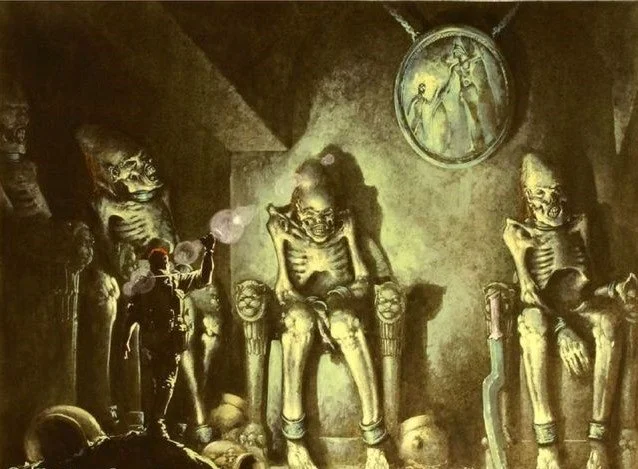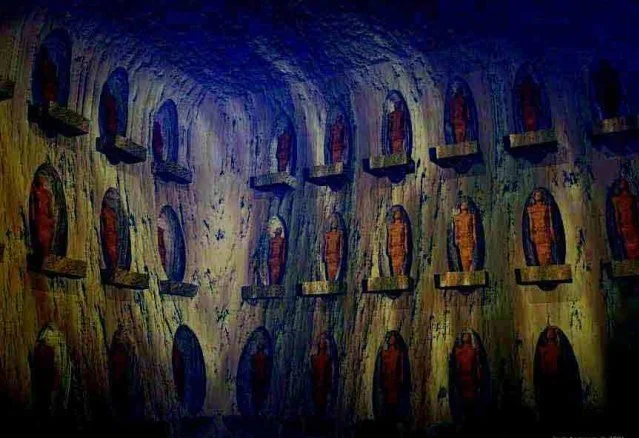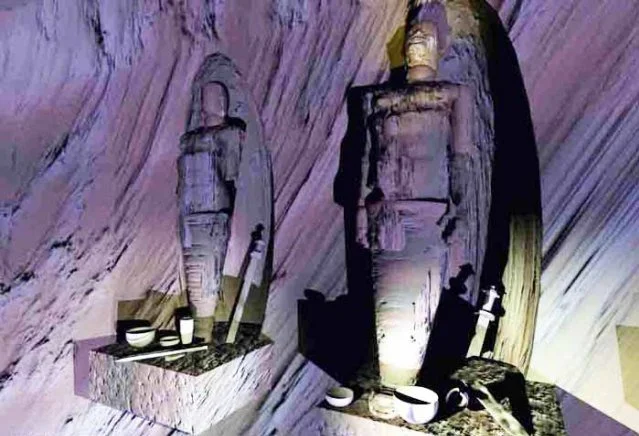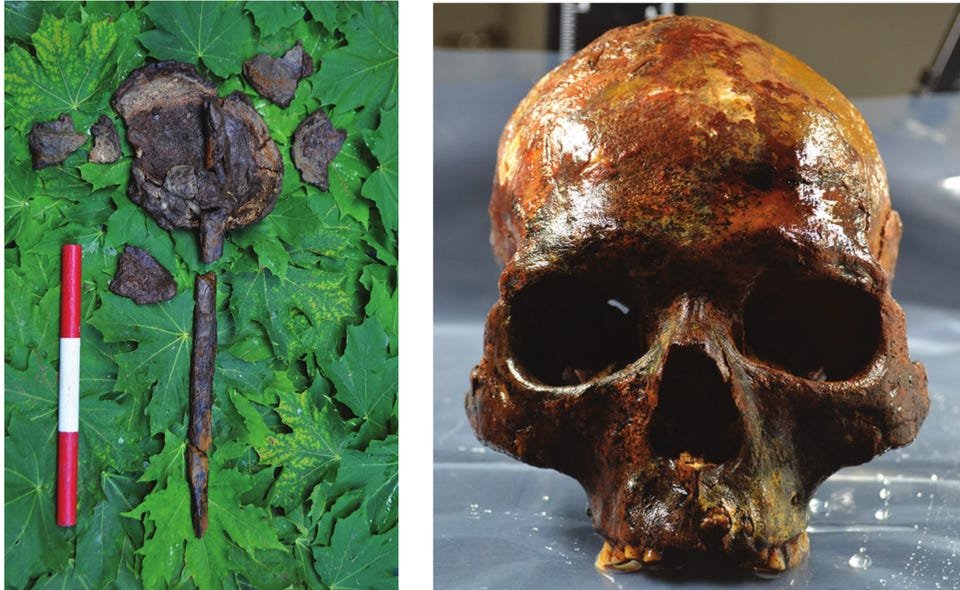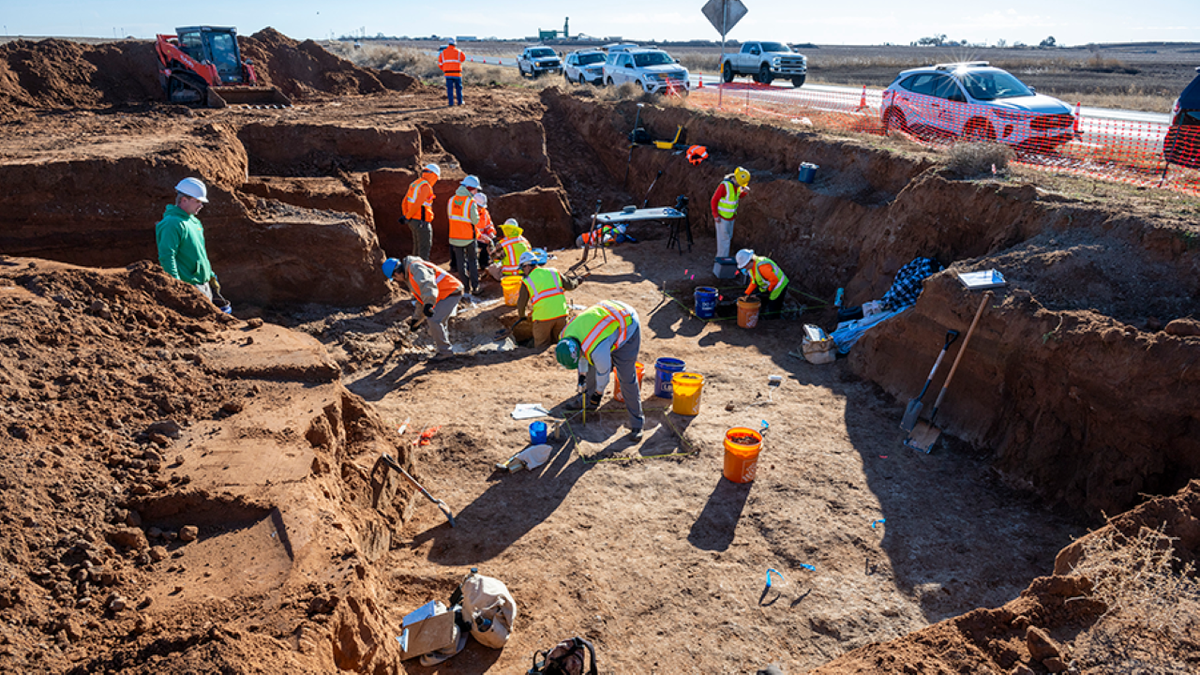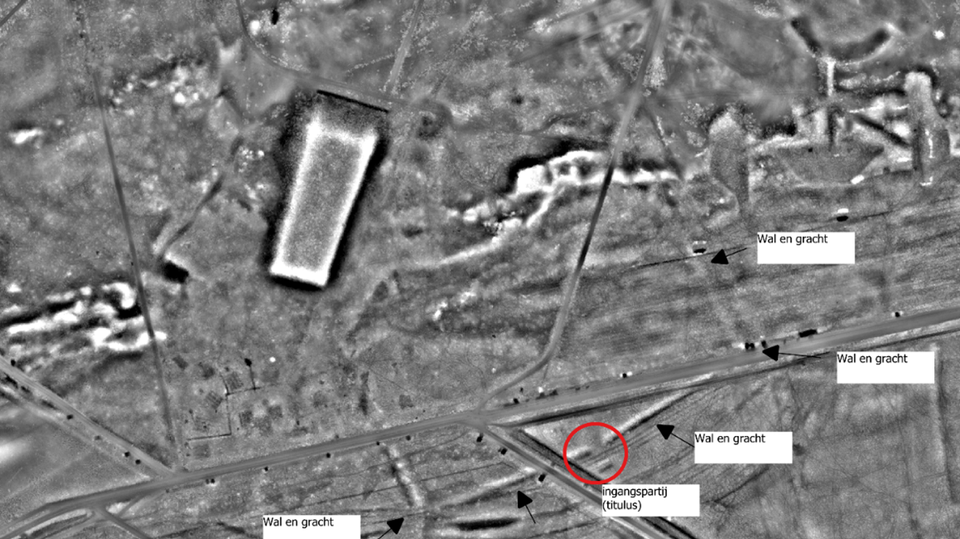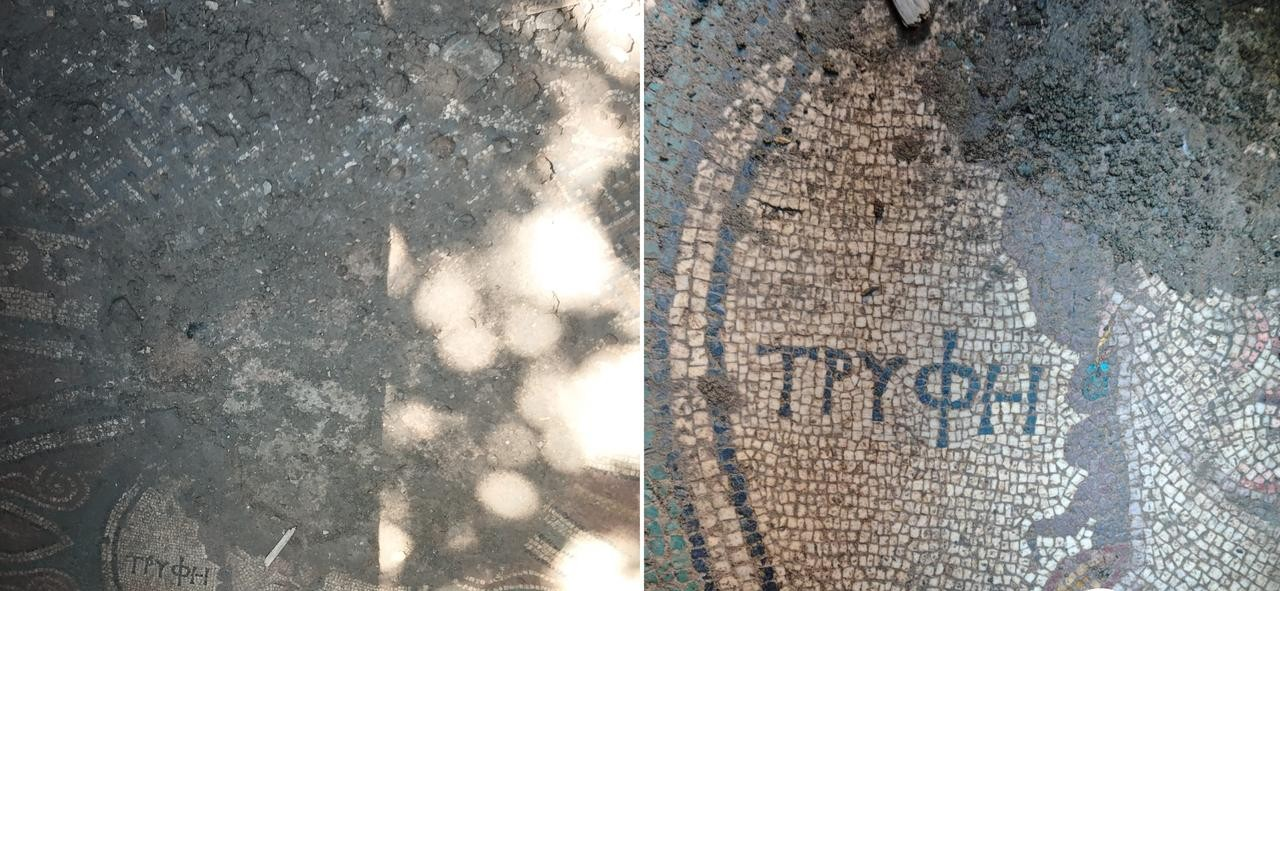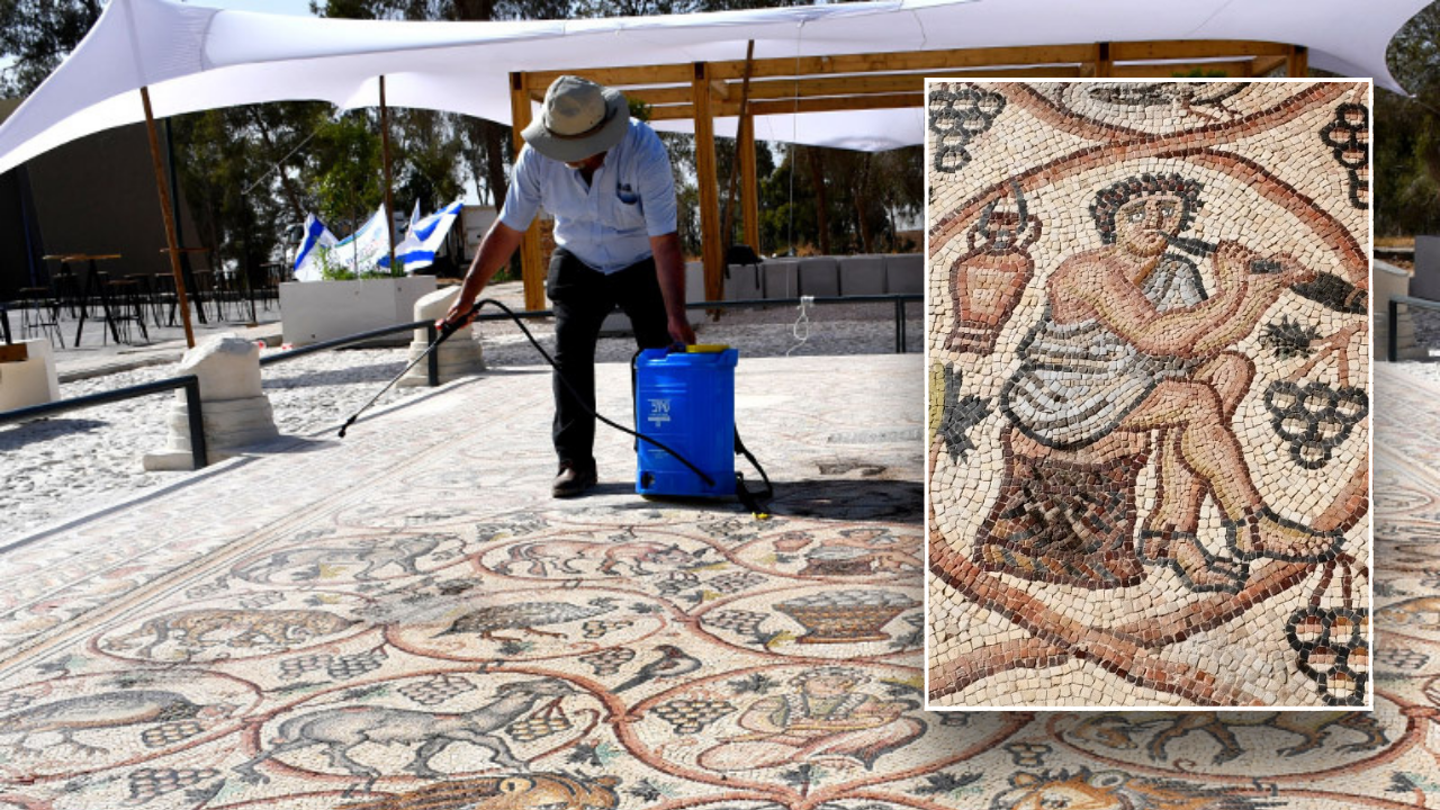We love discoveries on this channel, and in this video, we're accepting discoveries from anywhere! It doesn't matter whether they were made by archaeologists, palaeontologists, scientists or astronomers - the one thing they all have in common is that they're incredible finds that come with amazing stories. Let's get started!
An Underground City Full Of Giant Skeletons Discovered In The Grand Canyon
In the early 20th century, chance led us to the gate of the underground town of the most prominent giants of that period. This was an unprecedented find in the Grand Canyon, which soon repeated in the press.
The Grand Canyon was the birthplace of a culture in which, according to an article published in the Gazeta de Arizona on April 5, 1909, people of cyclopean proportions existed. A civilization that only left us some structures as a testimony of its existence.
The article mentions the discovery of a huge subterranean citadel by an explorer named GE Kinkaid, who accidentally found it while rafting on the Colorado River. It is worth mentioning that Kinkaid was a recognized archaeologist and had the financial support of the Smithsonian Institution.
According to their descriptions, the entrance to this mysterious city was at the end of a tunnel that extended for something more than 1,600 meters underground.
Kinkaid was impressed that the cavern was almost inaccessible. The entrance was about 450 meters under the wall of the steep canyon. The place was in a zone protected by the government and the access was penalized under fine.
“Above a shelf that could not be seen from the river was the entrance to the cave. When I saw the chisel marks on the wall inside the entrance, I got interested, I got my gun and I went in. “Kinkaid said.
The architecture found suggested that the builders of that subterranean city possessed advanced engineering skills.
The central axis of the underground city made it a gigantic camera from which radiated passages similar to the radii of a wheel. The walls of the main chamber were adorned with copper weapons and tablets covered with symbols and hieroglyphic characters very similar to those we know in Egypt.
Another interesting finding was the discovery of mummified bodies inside the citadel. None of the mummies found were less than 2.74 meters and all were wrapped in dark linen. Kinkaid said he had taken photographs of one of them with a flashlight, however, none of those photos were found.
Further explorations revealed interesting data on the beliefs of these alleged giants of the city.
More than 30 meters from the entrance is a room with a cross-shaped plant several tens of meters long and where an idol was found that could have been the main god of his religious system.
He was sitting cross-legged and with a lotus or lily flower in each hand. His face had oriental features as well as the carving of the cave. This idol had a certain resemblance to Buddha, although the scientists of the time did not finish assuring that it represented that religious cult.
The article also talks about the discovery of ceramics and other artifacts with trademarks having been manufactured in other parts of the world. Perhaps a rare mixture of cultures that scarcely occurs in archaeological finds, so this discovery would be of unprecedented importance.
The last camera they found on the exploration was what Kinkaid and his partner, Professor SA Jordan, a ceremonial crypt, believed to be at the end of the great hall where they found the mummies.
Unfortunately, the article does not give many more details about this discovery. Nor are there any official versions or references to this enigmatic subterranean city. The Smithsonian Institute denies having knowledge of the existence of this underground city.
Αrchaeologists Found a Skull impaled with a big Pointy spike
A little-known time period in Scandinavian prehistory has recently yielded some of the most extraordinary human remains ever found. On top of a dense layer of stone placed on the bottom of a small lake were pieces of ten humans who lived around 6000 BC. Even stranger than their location in a lake was what had happened to them: most had smashed skulls, and two preserved the remains of long wooden spikes that suggest their heads may have been violently dismembered and displayed.
Writing in the journal Antiquity, Swedish archaeologists Sara Gummesson, Fredrik Hallgren, and Anna Kjellström describe a set of nine adults and one infant skeleton found a few years prior at the site of Kanaljorden in east-central Sweden. A small lake at the site revealed a 12-meter by 14-meter area of packed stone, along with human and animal bones placed on top of the purposefully made structure. Those bones have been carbon dated to 6000-5500 BC, a time when there were at least two settlement areas on the banks nearby, with archaeological material indicating a hunting-and-gathering society.
Animal remains from the lake come from at least seven different species, including wild boar and brown bear. Cut marks on these fauna suggest the animals were being manipulated and dismembered after death, potentially for a reason other than for consumption by humans. The fact that none of the animal bones was burned provides additional support for this hypothesis.
While using animal bones for a ritualistic purpose may not seem too unusual, the archaeologists discovered nine adult human skulls in the same location with surprising injuries. Two were found to be female, four were found to be male, and the others were of indeterminate sex. The tenth person was a full-term infant, but it is not clear if it was stillborn or died soon after birth.
The catalogue of injuries to the adult skulls includes blunt force trauma mostly to the top of the head and to the face, and both of the females and all four males suffered from these traumatic injuries. The women, however, "exhibited evidence of multiple instances of trauma to the back of the head," Gummesson and colleagues write, "whereas the males exhibited a single traumatic event to the top of the head or to the face." Three of the males also revealed sharp trauma that occurred around the time of death.
Because the human remains were deposited in a lake with minimal water flow, they are very well preserved, even eight millennia on. One skull contained remnants of brain tissue, which the archaeologists conclude means it was deposited shortly after death. The remarkable preservation conditions also allowed them to recover wooden objects -- namely, about 400 intact and fragmentary wooden stakes suggestive of a fence or other partition.
Two of these stakes, however, were found inside skulls. In the image above, "the stake is intact, 25 mm wide and 0.47 m long, of which the last 0.2 m were embedded in the cranium. The opposite end of the stake is pointed," the archaeologists write. Another stake, while broken, was found partly lodged in a second skull. "In both cases, the stakes were inserted through the foramen magnum," or the large hole in the skull through which the spinal cord passes, reaching all the way into the inner table of the skull. "These finds show that at least two of the crania were mounted," Gummesson and colleagues conclude.
The placement of these human heads on a human-made stone structure underwater is unique, the researchers note. But the healed head injuries are not quite as rare: similar ones are seen in other northern European populations from this time period and have been attributed to accidents, interpersonal violence, forced abduction, spousal abuse, socially regulated violence, and warfare. Since "the majority of blunt force trauma at Kanaljorden was located above the hat brim line," the archaeologists say that this suggests "violence rather than accidental injury."
The people at Kanaljorden were hunter-gatherers, which makes it unlikely this was a socially stratified society, with the decapitated people being slaves or captives. Rather, the researchers note that "one alternative would be to view the trauma as an outcome of inter-group violence; for example, raiding and warfare - both common occurrences among hunter-gatherers."
More specifically, the different patterning of injuries in the men and women may be linked to their differing roles and behavior in combat, as Gummesson and colleagues note that "violence to the head is a most effective way of subduing an opponent or victim." If these individuals were indeed victims of violence from outside their group, the fact that many of them have multiple healed injuries may speak to a life subjected to periodic violent acts.
Neither the cause of death of these people nor the reason for the positioning of two of them on stakes is clear from the archaeological investigation. Given the placement of the stones in the water and the bones on top of that, however, the researchers conclude that "the deposition can be described as being carefully planned and executed, from the construction of the underwater stone packing to the spatially separated depositions of curated human and animal remains."
While ongoing research into this time and place will undoubtedly yield new information in the future, for now Gummesson and colleagues can say that "the fact that the majority of the individuals showed healed injuries seems to be more than a coincidence and implies that they were specifically chosen for inclusion in the deposition." Should additional human remains be found similar to those uncovered at Kanaljorden, perhaps our questions about violence in Mesolithic hunter-gatherer societies will one day be answered.
Robots Exploring This Ancient Mega Temple Found A Subterranean Maze That Hosted A Sinister Ritual
A team of experts are cramped in an underground chamber with a network of mysterious tunnels leading from it. It’s a stone-built subterranean labyrinth in the Peruvian Andes, created more than 3,000 years ago by a lost civilization. The scientists launch a four-wheeled mini-robot with a camera and lights down one of the narrow passages, which is too small for a human to enter. And what the high-tech machine reveals is both macabre and deeply shocking.
Vlad the Impaler - Dracula The Man & Myth Documentary
In the following video we will talk about Vlad the Impaler, the Dracula Man. Watch the documentary and enjoy!
12 Most Incredible Ancient Artifacts Finds
We still have much to learn about the ancient world, but fortunately, we can do that learning a piece at a time. Every time an ancient artefact is discovered, it’s an opportunity to learn more about our ancestors, how they lived, what they believed and perhaps even a hint of their personalities! What can the things you’re about to see in this video teach you about the past? Let’s find out!
This Scientists Has Reported That Something Big Is Happening Right Now To Marine Life
This scientists has reported that something big is happening right now to marine life. Today, we take a look at what is happening right now to marine life.
Our oceans are vast, beautiful, and dangerous. Beauty lies within the hidden depths, ever mysterious. Even now we lack knowledge about the truths of our oceans and what truly lurks within them. Throughout the years we have not treated our oceans with the respect it deserves. Now, whales have been washing up on Californian beaches. So far more than twenty whales have perished upon the sands of the golden coast within the past few months.
That Time the Mediterranean Sea Disappeared
How could a body of water as big as the Mediterranean just...disappear? It would take decades and more than 1,000 research studies to even start to figure out the cause -- or causes -- of one of the greatest vanishing acts in Earth’s history.
A brie(f) history of cheese
Before empires and royalty, before pottery and writing, before metal tools and weapons – there was cheese. As early as 8000 BCE, Neolithic farmers began a legacy of cheesemaking almost as old as civilization. Today, the world produces roughly 22 billion kilograms of cheese a year, shipped and consumed around the globe. Paul Kindstedt shares the history of one of our oldest and most beloved foods.
Most Forbidden & Dangerous Places
In this video we will explore the most forbidden and dangerous places. Enjoy!
Shocking Discovery Under the Domeof the Rock
The Dome of the Rock is an Islamic shrine located on the Temple Mount in the Old City of Jerusalem. The Temple Mount, where the Dome of The Rock, the Al Aqsa Mosque, and the Golden Gate stands, is one of the most precious pieces of land on Earth.
Recently, the tensions around this area only intensified as Jews and Muslims clashed for dominance on the Temple Mount. Almost every year during Ramadan, Muslims throw stones from the top of the Temple Mount at Jews who pray at the Western Wall. The Israeli police reacts by entering the site to pacify the aggressors, which of course, creates even more anger from the Muslim community.
So why exactly is this place so fought for? And are the many religious claims that see this place as the cornerstone of all Abrahamic faiths true? What is under this big shiny gold dome? Those are the questions we will try to answer in today’s video!
Norse Mythology Family Tree
Norse mythology, a key aspect of the cultural heritage of Scandinavia, presents a fascinating and intricate family tree of gods, giants, and other mythical beings. At the heart of this mythology is the pantheon of deities, each with their own distinct personalities, stories, and roles within the cosmic order.
The most prominent gods belong to two tribes: the Æsir and the Vanir. The Æsir, residing in Asgard, are often associated with power and war. Odin, the chief of the Æsir, is a god of wisdom, poetry, death, divination, and magic. He is married to Frigg, the goddess of foresight and wisdom. Their children include Baldr, the god of beauty and light, and Hodr, the blind god of darkness. Thor, another central figure and son of Odin (with the giantess Jörð), is the god of thunder, known for his mighty hammer Mjölnir. Heimdallr, the watchman of the gods and the guardian of Bifröst, the rainbow bridge to Asgard, is also among the Æsir.
The Vanir, associated with fertility, wisdom, and the ability to see the future, reside in Vanaheim. Notable members of the Vanir include Njörðr, the god of the sea, winds, and wealth, and his children, Freyr and Freyja. Freyr is a god of fertility, sunshine, and rain, while Freyja, a goddess of love, beauty, fertility, war, and death, is among the most revered deities.
The two tribes of gods were initially in conflict, leading to the Æsir-Vanir War. This conflict ended with an exchange of hostages, leading to a more integrated pantheon. Freyr, Freyja, and their father Njörðr became members of the Æsir after this truce.
Giants, or Jötnar, are another crucial component of Norse cosmology, often in opposition to the gods. Despite this enmity, the gods and giants are frequently interlinked through various liaisons and marriages. Loki, a figure of trickery and chaos, is a complex character who straddles the line between the Æsir and the giants. Born to giant parents, Loki becomes a blood brother to Odin and plays a pivotal role in many Norse myths, often through his cunning and deceit.
The family tree extends to other beings like dwarfs, elves, and various monsters. For example, the monstrous wolf Fenrir, the world serpent Jörmungandr, and Hel, the ruler of the underworld, are all children of Loki.
The intertwined relationships within the Norse pantheon reflect a world view where power, wisdom, and the natural elements are in a constant state of interplay and balance. The gods and their stories are not just mythic characters; they embody the values, fears, and aspirations of the Norse people, providing insight into their understanding of the world and their place within it.
Archaeologists Opened The Cave Of The Jaguar God – And Inside Lay A Treasure Trove Of Maya Relics
Inch by excruciating inch, Guillermo de Anda, an archaeologist from Mexico’s National Institute of Anthropology and History (INAH), drags himself face down through a dark, dank tunnel – a subterranean passageway little more than 1 foot high. Then, hours later, the explorer emerges into a chamber filled with ancient Maya relics. And the discovery reduces him to tears…
Mysterious Archaeological Sites That Hold a Secret
In this video we will explore mysterious archaeological sites that hold a secret. Enjoy!
100 Most Dangerous Ocean Creatures of All Time
In today’s video we are going to show you 100 most dangerous ocean creatures of all time. Enjoy!
The Most Mysterious Places Ever Found
In today’s video we will investigate the most mysterious places ever found. Watch the video and enjoy!
Wise Ancient Greek Philosophers Quotes to Make You a Better Person!
Here are some quotes from wise Ancient Greek philosophers that will definitely make you a better person. Enjoy!
Legend of Atlantis (Full Episode)
Exciting evidence emerges of civilizations lost for centuries under the waves, from mysterious underwater pyramids off the coast of Japan to the fabled city of Atlantis itself. Using cutting-edge graphics to reveal what's actually lying on the seafloor, and insight from the world's top marine archaeologists, Drain the Oceans finds the answers.
The Germanic Tribes - The Ascent of Civilization - Full Historical Documentary
There is barely a country in Europe that cannot look back on Germanic roots. The term ‘Germanic’ actually refers to a number of tribes and clans that lived in Central and Northern Europe from the 6th century BC. Gaius Julius Caesar is said to have used the word when talking about the Gallic war. However, the Romans were full of contempt for the Germanic peoples, Tacitus calling their home a hideous blood-curdling place full of dark woods and swamplands.
But who were the Germanic Tribes? And how did they leave their mark on Civilization? Watch the video for more!
How Do We Decipher Forgotten Languages?
Writing is awesome, but it's only really useful while we still know how to read a particular writing system, so when we forget how to read a script, how do we re-learn with no one to teach us? Watch the video for more!

